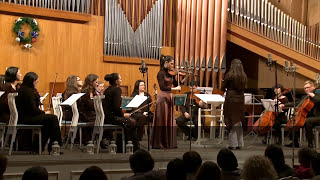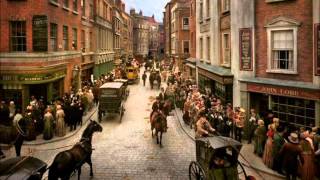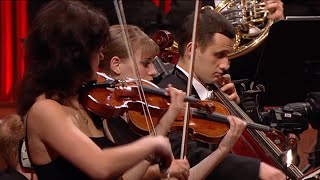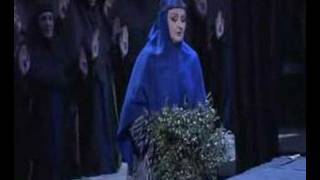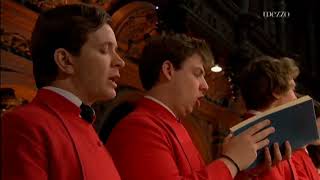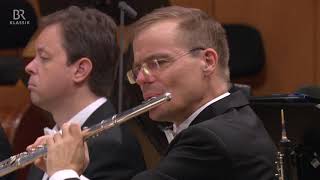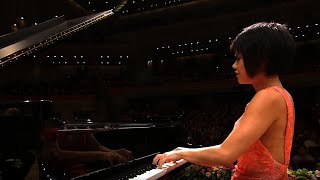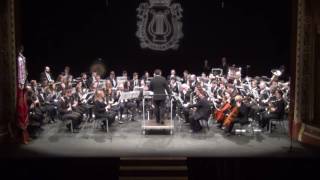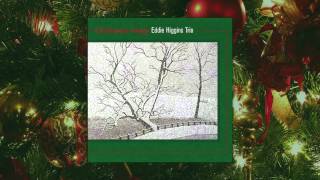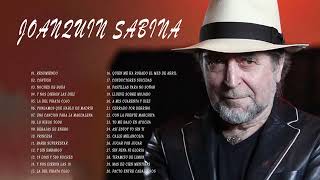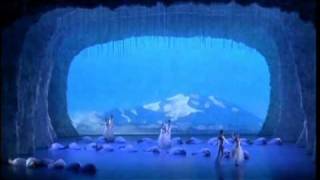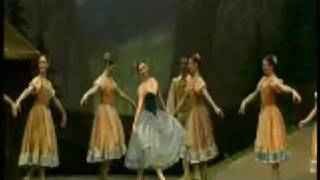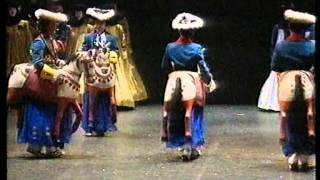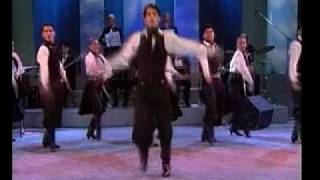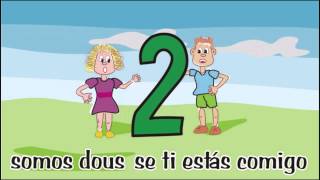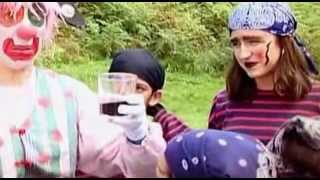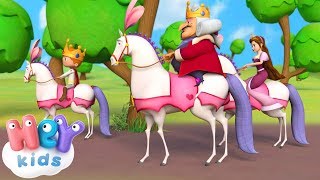Winter begins on December 22
Recommended music videos for initiation to classical music
Antonio Vivaldi (1678-1741) was an Italian priest, violinist and composer known as the red priest (“il prete rosso”). He was born in Venice and as a child he learned to play the violin with his father; At the age of 15 he entered the Seminary and once ordained a priest, he could barely attend to his religious obligations due to his health problems; So he was appointed violin teacher in an orphanage where he taught theory and instrument classes. At the age of 40 he was appointed Chapel Master in Mantua where he wrote his famous Four Seasons . From there he moved to Milan , then to Rome ; later, again to Venice and finally, to Vienna where he would die. Throughout his life he composed almost 800 works, of which half were concerts, 40 operas, 60 religious works and numerous sonatas.
The Four Seasons , Vivaldi 's best-known work, is a set of four concertos for violin and orchestra (each concerto is dedicated to a season: Spring, Summer, Autumn and Winter). Although, unusually for the time, Vivaldi published the concertos with accompanying poems describing what he wanted to represent in relation to each of the seasons, it provides one of the earliest and most detailed examples of what would later be called programmatic or descriptive music . , music with a narrative element.
Today we offer The Winter , explained by Vivaldi himself: I ALLEGRO (0´00´´). Frozen shivering among the silver snow at the severe blow of the horrid wind; run, kicking your feet at all times; and for the superb chattering of the teeth . II LONG (3´34´´) Being by the fire, calm and happy, while outside the rain is pouring wet. III ALLEGRO (5'47'') Walking on the ice, already at a slow pace; for fear of falling, move forward carefully. Go steady, slip, fall to the ground; again go on the ice and run fast without the ice breaking and crumbling. Feeling that you are leaving the iron doors; Sirocco, Boreas, and all the winds at war. This is winter, but what joy it brings us. This Winter 's performance is offered to us by violinist Olga Boico accompanied by the National Chamber Orchestra of Moldova under the baton of teacher Silvia Tabor
Gioachino Rossini (1792-1868) was an Italian composer of 39 operas, various songs, some piano works and some sacred music. He started composing at the age of 12. In 1812 he was hired by La Scala in Milan where he had a memorable success with “The Touchstone” ; The following year he premiered his first serious opera, Tancredi, in Venice and soon after he premiered another great success, The Italian in Algiers . In 1815 he settled in Naples where he wrote regularly and without stress with regulated essays and dates. In 1822 he moved to Vienna where he met the admired Beethoven . From Vienna to London , back to Paris and after the premiere of his last opera, William Tell , he left the opera in full economic and popularity boom at the age of 37. He died at the age of 77.
The six sonatas for four were composed by a precocious Gioachino Rossini at the age of twelve during the summer holidays he spent at the Conventello di Ravenna estate in the home of the wealthy Triossi family. This precocious and happy compositional phase lasted a total of three days, as Rossini himself attests in a scathing self-critical note posted. All sonatas reflect the same traditional tripartite pattern in concert form (two fast movements and a slow central movement). As for the writing itself, the sonata form conceived by Rossini for these works has some peculiarities: it is not conventionally organized according to the alternation of two themes and two tonal zones; but proceeds by simple succession of themes.
Johann Strauss (son) (1825-1899) was an Austrian composer, son of Johann Strauss and brother of the composers Josef Strauss and Eduard Strauss . Known in life as “the king of the waltz”, he was an essential factor in its evolution and sophistication, going from being a peasant dance to an entertainment dance of the Imperial Court . He is the best known of the family for his waltzes, his polkas and his marches; composer, also, of several operettas. His father wanted to prevent his son from going through the hardships of a musician's life, so it was his mother who helped and encouraged him to focus on music. His work forms the basis of the repertoire offered annually at the Vienna Philharmonic Orchestra 's New Year's Concert .
The Galop (a word that comes from “gallop”) is a dance with happy and light music originally from France and from the countryside.
Today we offer the Banditen-Galopp , which is a galop composed by Johann Strauss II from melodies from Strauss 's operetta Prinz Methusalem . The title of the composition is derived from the appearance in the play of a band of bandits trying to overthrow the prince, and its main melody is in the duet with chorus of the third act. Today's version is conducted by Austrian maestro Matthias Georg Kendlinger .
Vincenzo Bellini (1801-1835) was an Italian composer and one of the three leading representatives of the bel canto era of the early 19th century , along with the Italian composers Gioachino Rossini and Gaetano Donizetti . He was a child prodigy and his first composition dates back to when he was six years old. He composed sacred music (motets, masses, etc.), chamber music, a famous concerto for oboe and orchestra; but opera is the musical genre that made him famous. After trying to enter the operatic environment of London with little resonance, Bellini retired to Paris . In France he died at the age of 33, after an intestinal infection, probably contracted in the early 1830s.
Her most widespread work is Norma , in which the very famous aria Casta Diva stands out, (today covered by the Slovak soprano Edita Gruberová ) where classical gravity is combined with a very romantic passion in expression, this being one of the great roles. for soprano within the repertoire. During the 20th century , Maria Callas stood out in this role, who was the most famous Norma of the century and who recovered the purely bel canto character of the role, buried by the veristic excesses of previous generations of singers.
Recommended classical music videos
Georg Friedrich Händel ( 1685-1759) was born in Halle , Germany; Naturalized English, he is one of the leading figures in the History of Music and, of course, of the Baroque. Of his abundant musical production, we must highlight the Oratorio El Mesías , one of the masterpieces of History . As a child he began taking harmony and counterpoint classes from Friedrich Zachow , organist from Halle , with whom he also learned to play the oboe, violin and organ. At the age of 18 he moved to Hamburg where he wrote his first two operas. After three years he traveled to Florence and then to Rome . In 1710 he returned to Germany and from there to London where he settled for life. Despite the total silence with which he protected his privacy, his homosexuality seems clear. He died at the age of 74 at his home.
The Messiah is an English oratorio composed by Georg Friedrich Hände l in 1741, with a biblical text compiled by Charles Jennens . It premiered in Dublin on April 13, 1742 and was performed almost a year later in London . After a modest initial public reception, the oratorio gained popularity and eventually became one of the best-known and most frequently performed choral works in Western music. Handel turned to English oratorio in the 1730s in response to changing public tastes; The Messiah was his sixth work in this genre, while a marked Italian influence can be recognized in the other oratorios, the music of The Messiah is rooted in ancient German passions and cantatas.
The three-part structure of the work approximates that of Handel 's three-act operas, with the "parts" subdivided by Jennens into "scenes." Each scene is a collection of individual numbers or "movements" that take the form of recitatives, arias and choruses. PART I (0´00´´) begins with the symphony/overture, after which the text uses the prophecies of Isaiah and others, and moves on to the annunciation to the shepherds, the only scene taken from the Gospels . In PART II (56´40´´), Händel concentrates on the Passion and ends with the chorus “ Hallelujah ”. In PART III (1H 53´43´´) it covers the resurrection of the dead and the glorification of Christ in Heaven.
Wolfgang Amadeus Mozart (1756-1791) is considered one of the three giants of musical composition along with Bach and Beethoven . Child prodigy born in Salzburg , at the age of six he mastered the keyboard and violin and began to compose. His father, Leopold, exhibited him on exhausting tours of different European courts. Prolific composer (more than 600 works written from the time he was five years old until his death) he cultivated all types of musical genres: piano works, chamber music, symphonies, concert works, choral works, operas... each and every one of them, masterpieces of its gender. His operas The Magic Flute, Don Giovanni, Cosí fan Tutte, and The Marriage of Figaro are among the 10 most performed operas in the world. He died in Vienna at the age of 35.
Symphony No. 41 in C major, K. 551, Jupiter , is the last symphony that Mozart composed. It seems that it was the music entrepreneur Johann Peter Salomon who added the epithet “Jupiter” to the symphony, implying that it had identical characteristics to that of the supreme and triumphant god. It consists of the four movements common in those times: I (0´03´´) ALLEGRO VIVACE .-. II (11´15´´) ANDANTE CANTÁBILE .-. III (23´13´´) MINUETTO: ALLEGRETTO .-. IV (27´33´´) MOLTO ALLEGRO.
Today we offer it conducted by Simone Young Australian conductor, who has been general director of the Australian Opera in Sydney , executive director of the Hamburg State Opera and principal conductor of the Philharmoniker Hamburg ; She has also been the first woman to conduct the Vienna Philharmonic and has recently been appointed music director of the Sydney Symphony Orchestra .
Frédéric Chopin (1810-1849) was a Polish virtuoso pianist and composer; As a pianist, he is considered one of the most important in history and as a composer, one of the leaders of Romanticism . He was born into a vocationally musical family; His mother played the piano and his father played the violin and flute; His first teacher was a sister of his with whom he liked to play four-hand pieces. At the age of eight he gave his first public concert at the Radziwill family palace in Warsaw . Chopin 's work focuses exclusively on the piano, solo or concertante, with which he undertook a solo career of technical perfection, expressive splendor and deepening of rubato until he became the musical reference for said instrument.
The Concerto for Piano and Orchestra No. 2 in F minor, Op. 21 by Frédéric Chopin is one of two piano concertos by the Polish composer. Despite being published second, it is actually before Concerto No. 1 . It was completed at the end of the winter of 1829, when the composer was 19 years old, and is dedicated to the Countess Delfina Potocka . It was premiered by the composer himself at the piano on March 17, 1830 in Warsaw . It is, on the whole, with more dramatic accents than the Concerto in E minor . All in all, it is a wonderful melodic inspiration, rich in romantic expressiveness and rhythmic sense.
Structure . The concert is structured in three movements: I (0´7´´) MAESTOSO. Written in sonata form with a broad orchestral introduction that exposes the two main themes. The first of them is softly beautiful, with broad and lyrical phrasing; the second is intimate, developed by the soloist. When, after a fortissimo , the piano bursts in brilliantly, it will no longer leave its privileged position.-. II (15'18'') LARGHETTO. Intimate and loving, it was inspired by Chopin 's youthful love: the soprano Konstancja Gładkowska . It has a tripartite structure, with the extreme sections full of amorous outpourings, while the central section has a contrasting dramatic sense.-. III (24'07'') ALLEGRO VIVACE. Written in the form of a rondo , this final beat consists of two main themes: the first is endowed with simplicity and charm, while the second is practically a mazurka with a clear Polish flavor. The piano plays with both themes, in a carefree and very bright atmosphere accompanied by an orchestra in which the strings dominate. The last section is written in moto perpetuo .
Yuja Wang (1987), our soloist today, is a Chinese classical pianist, who began studying piano at the age of six. She entered the Central Conservatory of Music in Beijing a year later. At the age of 21 she was already internationally recognized and gave recitals all over the world, performing with the most relevant orchestras in the world. In an interview with the Los Angeles Times she said: "For me, playing music is transporting me to another way of life, another way of being. An actress does that."
Ralph Vaughan Williams (1872-1958) was a British composer born in Down Ampney , Gloucestershire. He studied music and history at the University of Cambridge , later in Berlin with Max Bruch and in Paris with Maurice Ravel . He was appointed professor at the Royal College of Music (RCM) in 1919 and a year later he received an Honorary Doctorate from the University of Oxford , becoming the director of the Bach Choir and achieving that in the 1920s his works were disseminated throughout the European continent. His music is often described as typically English, generally in the same group of composers as Gustav Holst, Frederick Delius, George Butterworth, William Walton and others.
English Folk Songs Suite is one of the most famous works of English composer Ralph Vaughan Williams . It was first published for Brass Band as the Folk Song Suite and premiered at Kneller Hall on July 4, 1923, under the direction of Lieutenant Hector Adkins . The piece was later arranged for full orchestra in 1924 by Vaughan Williams' student Gordon Jacob , and published as the English Folk Song Suite . The piece was later arranged for a British-style Brass Band in 1956 by Frank Wright and published as English Folk Songs Suite .
Structure . The suite consists of three movements: I (0´4´´) March .-. (3´51´´) Intermezzo .-. III (7´31´´) March and is performed by the Algemesí Simfònica Band conducted by maestro Alberto Ferrer i Martínez
Recommended music videos for all tastes
Jazz is a musical genre born in the USA at the end of the 19th century . The German critic Joachim-Ernst Berendt describes it this way “ Jazz is a musical art form that originated in the United States through the confrontation of blacks with European music. The instrumentation, melody and harmony of jazz are derived mainly from the music of the West . The rhythm, phrasing and harmony elements of blues are derived from African music and the musical concept of African Americans.” The same author points out the three basic elements that distinguish jazz from European classical music: a) A special rhythmic quality known as swing . b) The role of improvisation and c) An individual sound and phrasing that reflects the personality of the performing musicians.
Lily Allen (1985) is a British songwriter, presenter and singer of pop and synthpop , among other genres. She is the daughter of Welsh actor and comedian Keith Allen and film producer Allison Owen , as well as the sister of actor Alfie Allen . In 2006 he released his debut album Alright, Still . On February 10, 2009, he released his second album titled It's Not Me, It's You . On May 2, 2014, she released her third album, her first after her retirement in 2009, titled Sheezu 's, which became her second album to reach number one on the UK Singles Chart consecutively. She was also the presenter of her own BBC Three television show Lily Allen and Friends .
Joaquín Sabina (Úbeda, 1949) is a Spanish singer-songwriter, poet and painter, who has published seventeen studio albums and seven live albums, and has collaborated with different artists singing duets and making other collaborations. Live albums are recordings of performances in which he has participated alone or together with other artists: It is estimated that he has sold more than ten million records and has also composed for other artists such as Ana Belén, Andrés Calamaro or Miguel Ríos , among others. others. In his literary facet he has published nine books with compilations of song lyrics or poems published in the weekly Interviú . He has achieved three platinum records for Vinagre y rosas (2009) and one gold for Lo niego todo (2017), his latest albums to date.
Natti Natasha is a Dominican reggaeton, Latin pop and bachata singer and songwriter who has been awarded the Reggaeton Italia Awards , Billboard and Premios Tu Mundo , among other important recognitions. In 2011, she collaborated with Don Omar on the song Dutty Love , a song that won her three Billboard Latin awards and her voice was included in other songs and remixes, concluding her contract with Don Omar in 2014. In 2017, his song Criminal with Ozuna managed to position itself at number 5 on the Hot Latin Songs list and reach two billion views on YouTube . In 2019 he released his first studio album titled Iluminatti , which we offer today, reaching number three on Billboard's US Top Latin Albums chart.
Recommended peculiar videos
David Fang (1986) is a Chinese composer of stage music, film, television and audiovisuals. Born in Shanghai and raised in New York , he began studying violin as a child with his father, a professional musician, and formalized his studies in music and musical technology in New York . At the age of 12 he wrote his first orchestral work and from then on he would continue composing music for video games and others. When he was only fourteen years old, he wrote the ballet The Four Seasons , of which today we present his Winter staged by Shanghai Dance Academy.
Adolphe Adam (1803-1856) was a French composer born in Paris and author of abundant stage music. He was the son of the renowned pianist and professor at the Paris Conservatory , Lois Adam , with whom he began his musical studies. As a young man, he joined the orchestra of the Théâtre du Gymnase where he became a timpanist and choirmaster. At the age of 18 he entered the Paris Conservatory and at the age of 20, he composed songs for the Parisian vaudevilles . His first successes came in his adulthood with the ballet Giselle and the opera Si j'étais roi ; although by then he had already written several ballets and operas.
Giselle is a ballet in two acts with music by Adolphe Adam , choreography by Jules Perrot and Jean Coralli and libretto by Théophile Gautier and Jules-Henri Vernoy, based on the play De l'Allemagne (1835) by Heinrich Heine . Giselle is a peasant girl of great beauty and extreme innocence; Deceived and betrayed, her heart breaks, falling into a despair that will drag her towards madness and death. Giselle is one of the masterpieces of ballet blanc , a ballet scene in which all the members of the corps de ballet appear dressed in white. Since the times of romantic ballet, these scenes have been populated by ghosts, dryads, sylphs, fairies or similar creatures.
Today we present some scenes from Act I starring Svetlana Zakharova and Roberto Bolle
Argia Dantza Taldea is a Basque dance group from San Sebastian made up of about 45 members directed by Juan Antonio Urbeltz (1940); It has collected “in situ” abundant dances from the Basque Country grouped in cycles in which the authenticity of the choreographic, musical and instrumental versions, and even costumes, has taken precedence. At the 1968 Middlesbrough International Folklore Festival (England) he won first prize for dance among 28 groups from 22 nations. In 1998, the Alfred Toepfer Foundation in Hamburg awarded him the European Prize for Popular Art .
Muriska . According to the caption of the video, it is a show offered at the Arriaga Theater in Bilbao in 1993, with choreography based on Suletino pastorals and premiered at the Olite International Festival .
The Malambo is a traditional Argentine folk dance, belonging to the so-called southern or southern music . It was born in the Pampa around the year 1600 and within Argentine folk dances, it is an exception because it lacks lyrics; The music of a bass drum and the guitars (sometimes, just the bass drum or percussion) accompany this dance performed only by men. A series of these combined movements is called "mudanza" or "zapateo" , and the conjunction of these constitutes the malambo itself. There are no rules for performing a tap dance. Each of the combinations of the basic movements is unique and depends on the originality of the gaucho who executes it. The zapateos are separated from each other by a foot strike called "repique" that contains a fast and particular sound that indicates the end of one zapateeo and the beginning of another.
Recommended music videos for children
Various Wikipedia articles have been used to write these texts.
The texts of Videomusicalis are written in Basque, Spanish and English.





